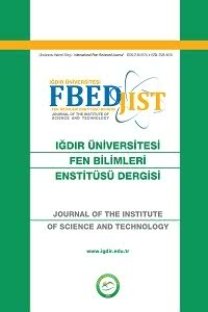Effect of Dielectric Substrate Parameters Which Dimensions of Lens and Distance From Antenna on The Gain Enhancement of Microstrip Antenna with Metamaterial
Metamaterial, substrate parameters, microstrip antenna
Effect of Dielectric Substrate Parameters Which Dimensions of Lens and Distance From Antenna on The Gain Enhancement of Microstrip Antenna with Metamaterial
Metamaterial, substrate parameters, microstrip antenna,
___
- Arayeshnia A, Bayat A, Keshtkar‐Bagheri M, Jarch S, 2019. Miniaturized low‐profile antenna based on uniplanar quasi‐composite right/left‐handed metamaterial. Int J RF Microw Comput Aided Eng., 2019, 29:e21888.
- Dadgarpour A, Zarghooni B, Virdee BS, Denidni TA, 2014. Beam tilting antenna using integrated metamaterial loading. IEEE Transactions on Antennas and Propagation, 2014, 62(5):2874-9.
- Esmail BA, Majid HB, Dahlan SH, Abidin ZZ, Rahim MK, Jusoh M, 2019, Planar antenna beam deflection using low‐loss metamaterial for future 5G applications. International Journal of RF and Microwave Computer‐Aided Engineering, 2019, e21867.
- Rahman MN, Islam MT, Isla, S, Samsuzzaman S, 2018. Resonator based metamaterial sensor to detect unknown materials. Microw Opt Technol Lett., 2018, 60: 1681– 1685. https://doi.org/10.1002/mop.31218
- Singh HS, Kalraiya S, Meshram MK, Shubair RM, 2019. Metamaterial inspired CPW‐fed compact antenna for ultrawide band applications. Int J RF Microw Comput Aided Eng., 2019; 29:e21768. https://doi.org/10.1002/mmce.21768
- Singh M, Kumar N, Dwari S, Kala P, 2019. Metamaterial‐inspired miniaturized antenna loaded with IDC and meander line inductor using partial ground plane. Int J RF Microw Comput Aided Eng., 2019, 29:e21863. https://doi.org/10.1002/mmce.21863.
- Kumar A, Kumar VD, 2013. High‐performance metamaterial patch antenna. Microw. Opt. Technol. Lett., 2013, 55: 409-413. doi:10.1002/mop.27304
- Lei Jie, 2018. Design of 2.4G Wi-Fi antenna (Design of 2.4G Metamaterial and Stacked Microstrip Wi-Fi Antennas), Northumbria University Publications, 2018, 10.13140/RG.2.2.12057.52329.
- Tütüncü B, 2019a. Compact low radar cross‐section microstrip patch antenna using particle swarm optimization. Microw. Opt. Technol. Lett. 2019, 61: 2288– 2294.
- Tütüncü B, 2019b. Polarizasyon Mod Bağımsız Üçlü Bant Mikrodalga Sinyal Emici. Journal of the Institute of Science and Technology, 2019, 9.1: 295-301.
- Veselago VG, 1968. The electrodynamics of substances with simultaneously negative values of ℇ and µ. Sov. Phys. Uspekhi, 1968, 10: 509-514.
- ISSN: 2146-0574
- Yayın Aralığı: 4
- Başlangıç: 2011
- Yayıncı: -
Peyniraltı Suyu Proteinlerinin Gıda Ambalajlamada Film Ve Kaplama Materyali Olarak Kullanımı
Nergiz YÜKSEL, Merve MUTİ İSTEK, Selda BULCA
Sensör ve Akıllı Telefon Kayıtları Yardımı ile Yapının Dinamik Karakteristiklerin Belirlenmesi
Investigation of Some Quinoa (Chenopodium Quinoa) Genotypes in Terms of Quality Criteria
Ömer EĞRİTAŞ, Mustafa TAN, Kamil HALİLOĞLU
Esra UÇAR SÖZMEN, Nuraniye ERUYGUR, Aşkın AKPOLAT, Metin Durmuş ÇETİN, Hasan DURUKAN, Ahmet DEMİRBAŞ, Tolga KARAKÖY
Konteyner Terminallerinde Ağır Vasıta Park Sahası Kapasitesinin Simülasyon Yöntemi ile Optimizasyonu
Mehmet Sinan YILDIRIM, Metin Mutlu AYDIN, Ümit GÖKKUŞ
Some Characterizations of Curves in n-dimensional Euclidean Space
